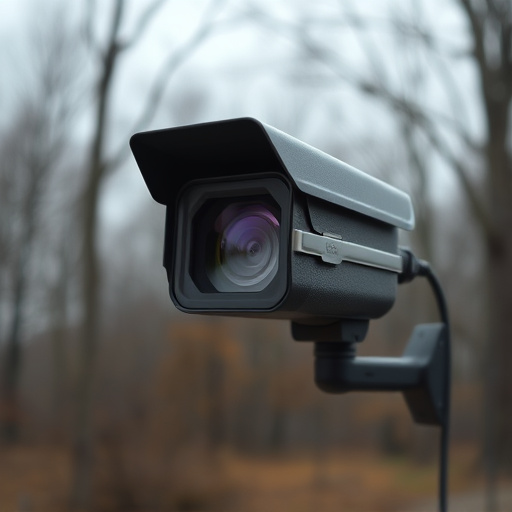RF technology detects spy cameras with remote viewing through unique electromagnetic signatures, enhancing privacy protection. In today's digital age, vigilance against these hidden threats is crucial. Specialized tools like RF detectors and SDR receivers pinpoint locations of spy cameras. Advanced SDR tech and high-sensitivity antennas expand detection range and accuracy. Regular signal searches, physical barriers, staff training, and securing personal items ensure robust security against spy cameras with remote viewing features.
Uncover the insidious world of hidden cameras with our comprehensive guide on detecting spy cameras using radio frequency (RF) technology. Learn how RF signals enable devices like spy cameras with remote viewing to transmit covertly. This article equips you to identify potential hidden cameras in everyday objects, navigate detection processes with tools and equipment, and implement robust security measures to safeguard your privacy from unsanctioned surveillance.
- Understanding Radio Frequency (RF) Technology
- Identifying Potential Spy Cameras in Everyday Objects
- Detecting RF Signals: Tools and Equipment
- Prevention and Security Measures Against Hidden Cameras
Understanding Radio Frequency (RF) Technology
Radio frequency (RF) technology is a critical component in detecting hidden cameras, especially those with remote viewing capabilities. These spy cameras operate using wireless signals to transmit video and audio data, making them nearly invisible to traditional detection methods. RF detectors are designed to uncover such devices by identifying the unique electromagnetic signatures they emit.
When a hidden camera with remote viewing is active, it constantly communicates with its receiver, often via a dedicated frequency band. This continuous signal transmission can be detected by specialized equipment that tunes into these specific ranges. By analyzing the strength and patterns of these RF signals, experts can pinpoint the location of the hidden camera, ensuring a more comprehensive approach to privacy protection in both personal and professional settings.
Identifying Potential Spy Cameras in Everyday Objects
In today’s digital era, the concern for privacy has grown significantly, prompting individuals to be more vigilant about potential hidden threats. One such stealthy device that can go unnoticed is a spy camera with remote viewing capabilities. These miniature cameras, often disguised as everyday objects like clocks, pens, or even smoke detectors, can capture video and transmit it wirelessly to a remote location, providing unauthorized access to personal spaces.
Identifying these clandestine devices requires a keen eye for detail and an understanding of common hiding places. While some spy cameras are obvious when scrutinized, others are designed with advanced camouflage, making them nearly invisible. A thorough inspection of objects that can be remotely controlled or have unusual functionality should be encouraged. For instance, a smart clock with unexplained remote control features might be more than just a timekeeping device; it could be a sophisticated spy camera with remote viewing capabilities. Staying informed about these technologies empowers individuals to protect their privacy and maintain a sense of security in public and private spaces alike.
Detecting RF Signals: Tools and Equipment
Detecting hidden cameras, especially those with remote viewing capabilities like spy cameras, requires specialized tools and equipment to uncover radio frequency (RF) signals. One of the primary methods involves using RF detectors or analyzers that can scan a wide range of frequencies to identify suspicious activity. These devices often come equipped with features like signal strength indicators and frequency scanners, allowing users to pinpoint exact locations where a spy camera might be transmitting data.
Advanced users turn to software-defined radio (SDR) receivers, which offer unparalleled flexibility in terms of frequency range and analysis. SDRs can intercept and decode signals, providing valuable insights into the type of device operating on a particular frequency. This technology is particularly useful when combined with antennas optimized for long-range or high-sensitivity detection, enabling users to uncover hidden cameras that might be lurking beyond plain sight.
Prevention and Security Measures Against Hidden Cameras
To prevent and secure against hidden cameras, especially those with remote viewing capabilities like spy cameras, several robust measures can be implemented. Regularly conducting thorough searches of spaces using specialized equipment designed to detect electromagnetic signals is a crucial step. These devices can identify unusual radio frequency (RF) emissions that may indicate the presence of hidden cameras. Additionally, installing physical barriers and security systems such as RF shielding films on windows and doors can block signals from spy cameras.
Security-conscious individuals and organizations should also promote awareness among staff and occupants. Training them to recognize potential hiding spots for hidden cameras—like corners, ceiling spaces, and behind furniture—can significantly reduce the risk of surveillance. Moreover, keeping personal items secure, such as using hotel safe deposits or locking bags when in public places, can deter would-be spy camera users from setting up remote viewing devices.
In today’s digital age, understanding hidden cameras, particularly those utilizing radio frequency (RF) technology for remote viewing, is an essential step towards safeguarding personal privacy. This guide has navigated through various aspects of RF detection, from the basics of RF technology to identifying everyday objects that could hide spy cameras. By equipping yourself with the right tools and equipment, you can effectively detect and neutralize these covert devices. Additionally, implementing robust security measures will significantly deter potential spies. Remember, being proactive about privacy is a game-changer in securing your personal and public spaces from unwanted surveillance.
